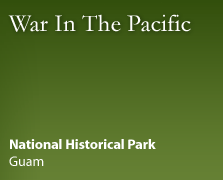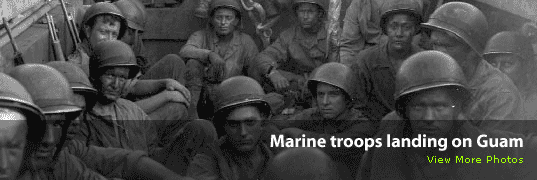| |
The Japanese drive in the summer of 1942 had carried them to the Solomon Islands and New Guinea. Both positions threaten Australia and New Zealand. In the easternmost islands of the Solomon group, the fine harbor of Tulagi, with an airfield on the neighboring island of Guadalcanal, offered a base for attacks on New Caledonia and the supply line from the United States. Behind and supporting both was the air and naval base under construction at Rabaul on New Britain. One thousand miles to the north was “Japan’s Pearl Harbor,” Truk (today Chuuk).
The first Japanese attack was on Port Moresby in southern New Guinea. In July the Japanese made a landing at Buna, farther down the coast. Two attempts to take Port Moresby failed.
In August the American and Australian navies took the offensive and attacked the Japanese positions in the eastern Solomons. Tulagi was taken and held. American Marines landed on Guadalcanal on August 7 and seized the almost completed airfield. Around this airfield, renamed Henderson Field, American and Japanese were locked for months in the most crucial struggle of the campaign, the final outcome of which was destined to be decided by the naval and aerial conflict.
On the night of August 8, a Japanese air force attacked the Allied Fleet and sank four heavy cruisers: the American Quincy, Astoria, and Vincennes, and the Australian Canberra, but it did not reach the transports. In October, November, and December, the Japanese renewed their attacks, first to reinforce their men, and as the great battle gradually turned against them, to evacuate their troops. In October, Vice Admiral William F. “Bull” Halsey was placed in command of the operations. In a final Japanese assault in November, officially called the Battle of Guadalcanal, the Japanese lost two battleships, four cruisers, six destroyers, and eight transports with other vessels, 28 in all, and an estimated 40,000 men. Allied losses were two cruisers and seven destroyers. By January 1943, the fighting around Guadalcanal was practically over. The Americans renewed their offensive, slowly drove the Japanese from the middle Solomons, and at the beginning of 1944 had made lodgments on New Britain and were closing in on the principal base at Rabaul.
On 31 January 1944 with perhaps the largest fleet ever assembled up to that time, the Americans struck Japan’s Marshall Islands. Within a few days this outpost of the Japanese Empire was taken. The Gilbert Islands had already been occupied in November 1943 in a swift, but costly three-day assault.
Meantime General MacArthur was taking personal charge of the offensive on the northern coast of New Guinea. Buna and Gona were taken in December 1942. In March 1943, a Japanese transport fleet attempting to reinforce Lae, was caught by land-based aircraft in the Bismarck Sea. All twelve transports and their escort was sunk, with an estimated loss of 40,000 men. In September Salamaua and Lae were captured, and the Japanese were driven from eastern New Guinea.
In the Aleutians, the Japanese had made lodgments on Attu and Kiska islands after the Battle of Midway. Weather conditions made fighting extremely difficult, but in May Attu was taken. Kiska was later evacuated and the Aleutians were clear.
Dirk Anthony Ballendorf
|
|





